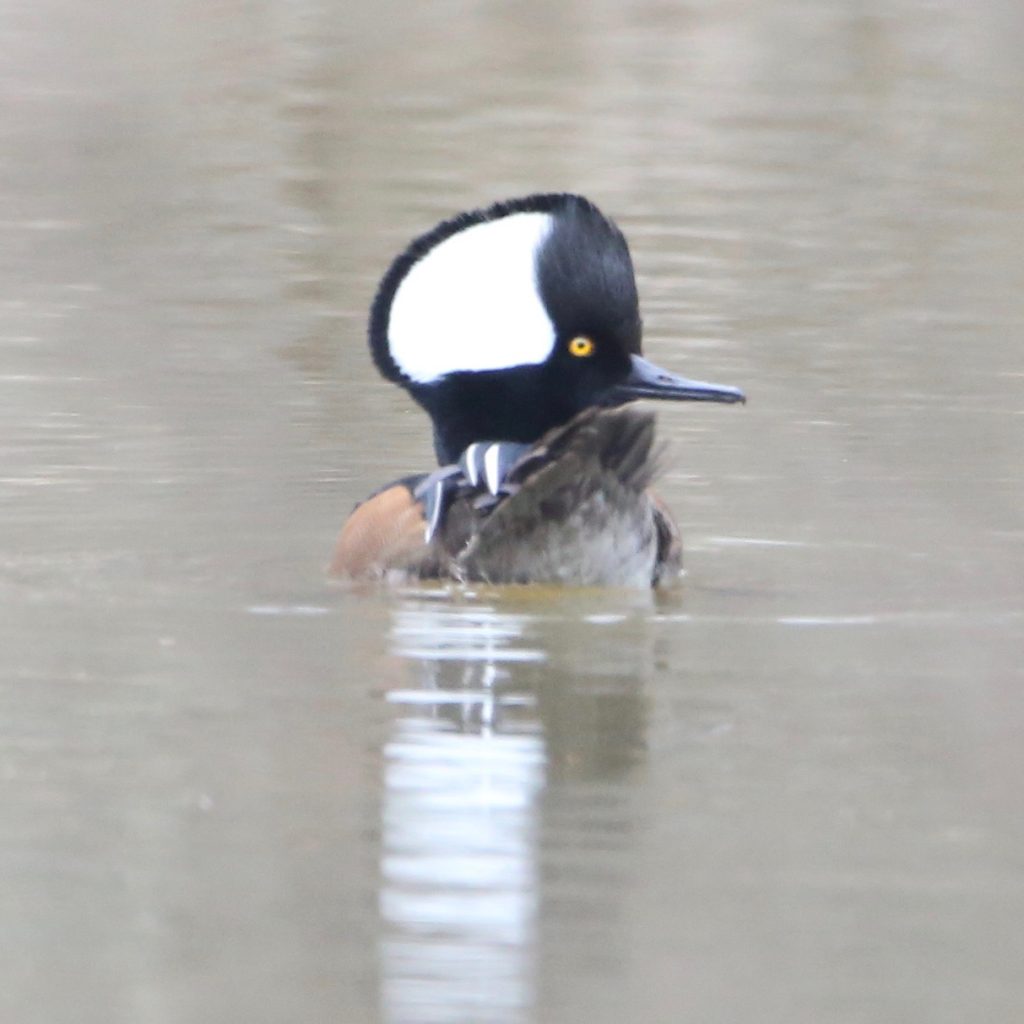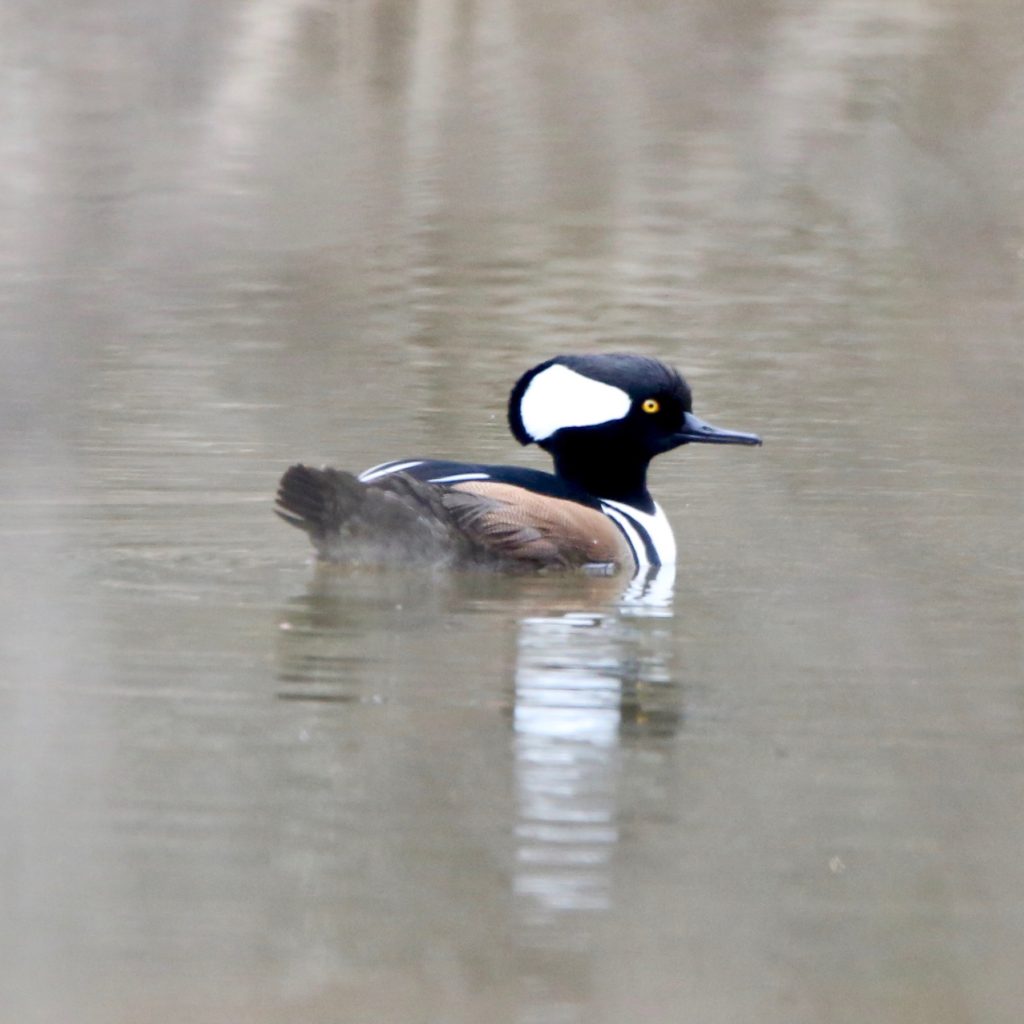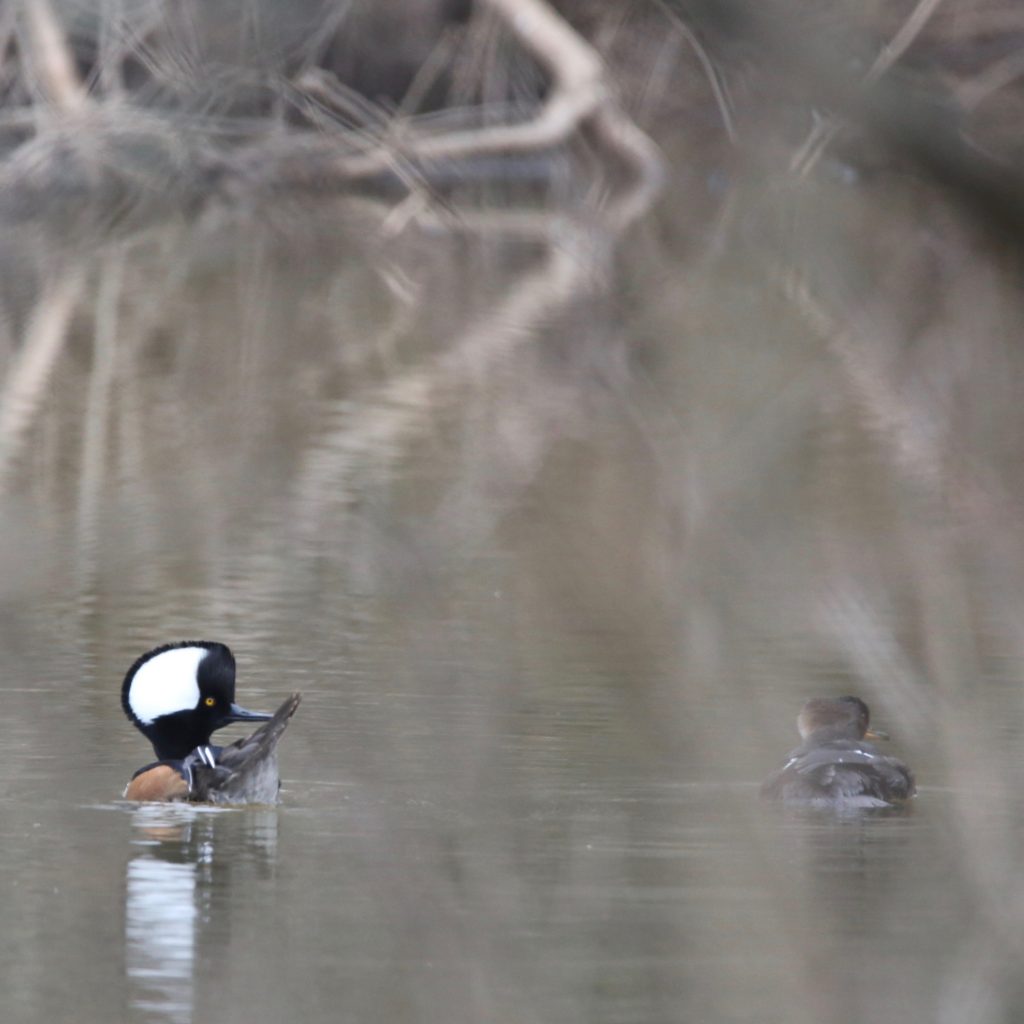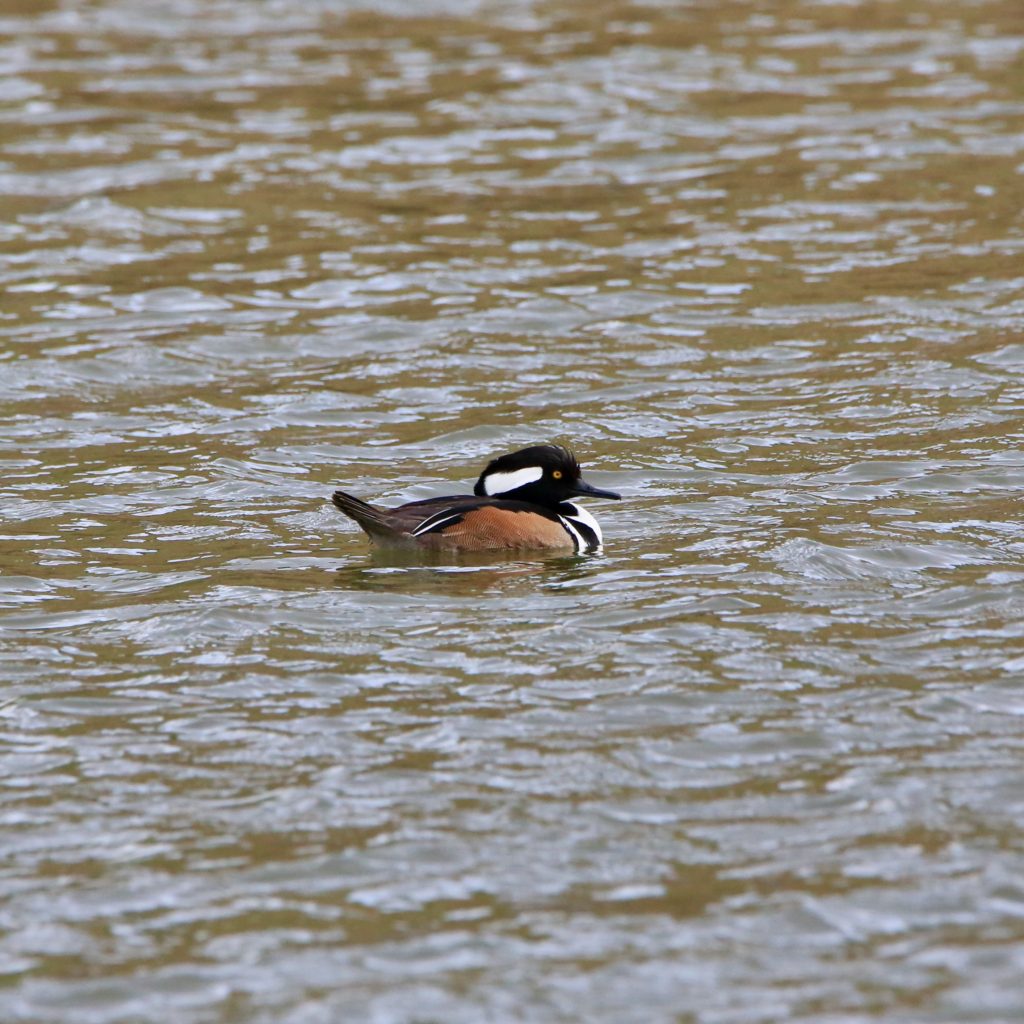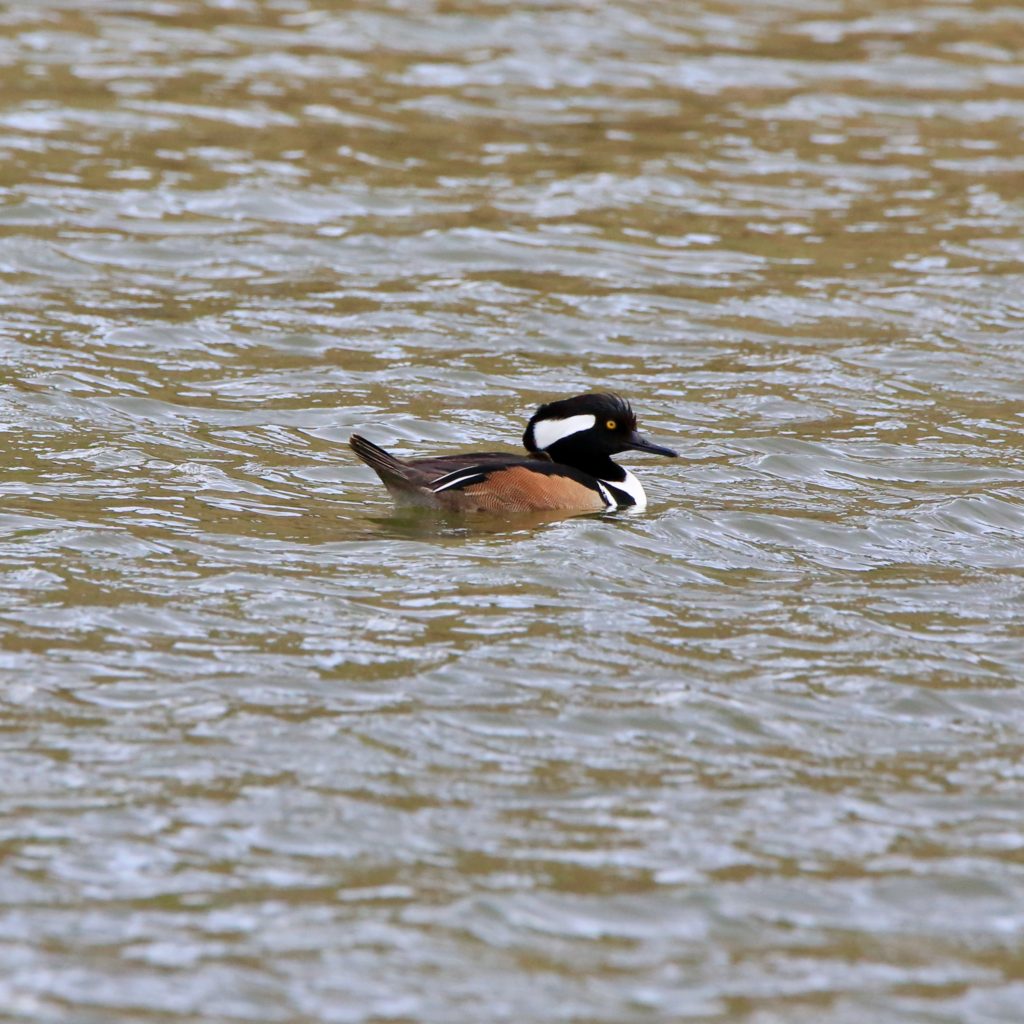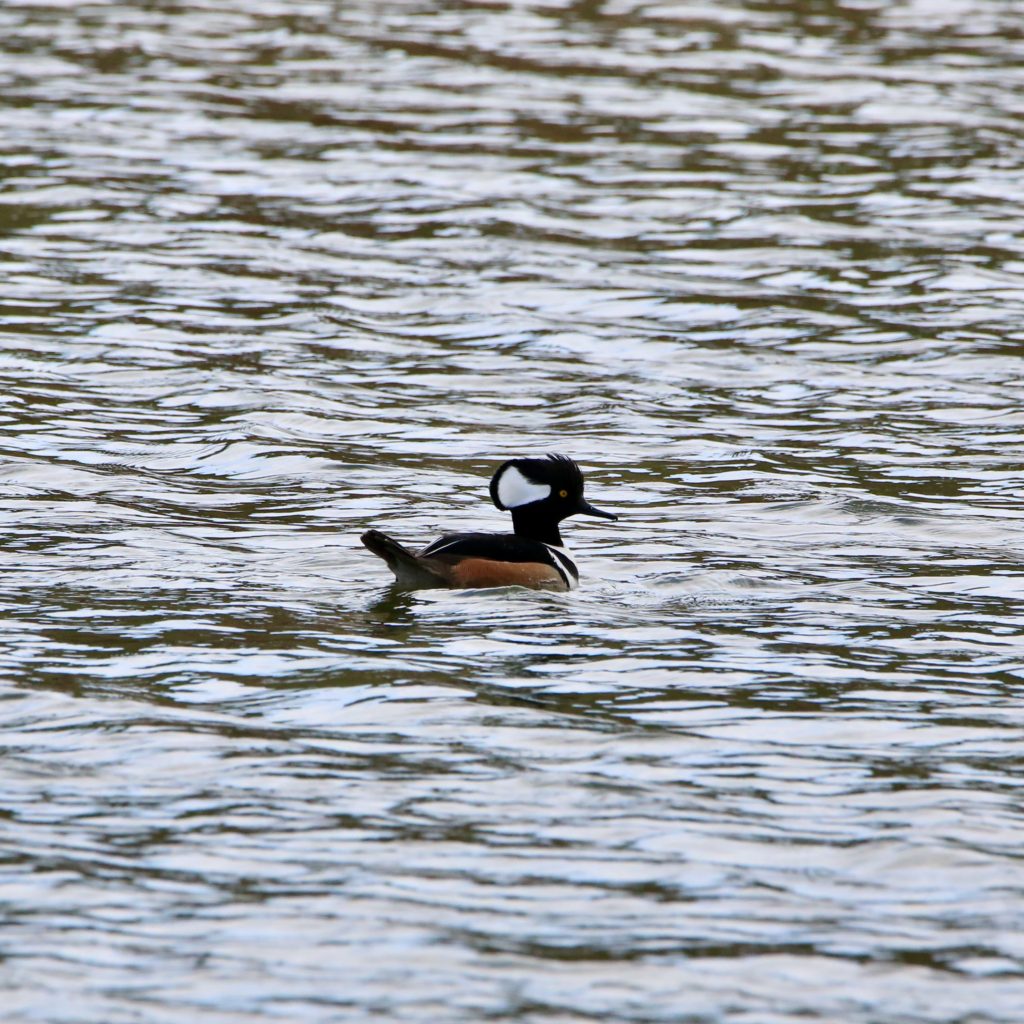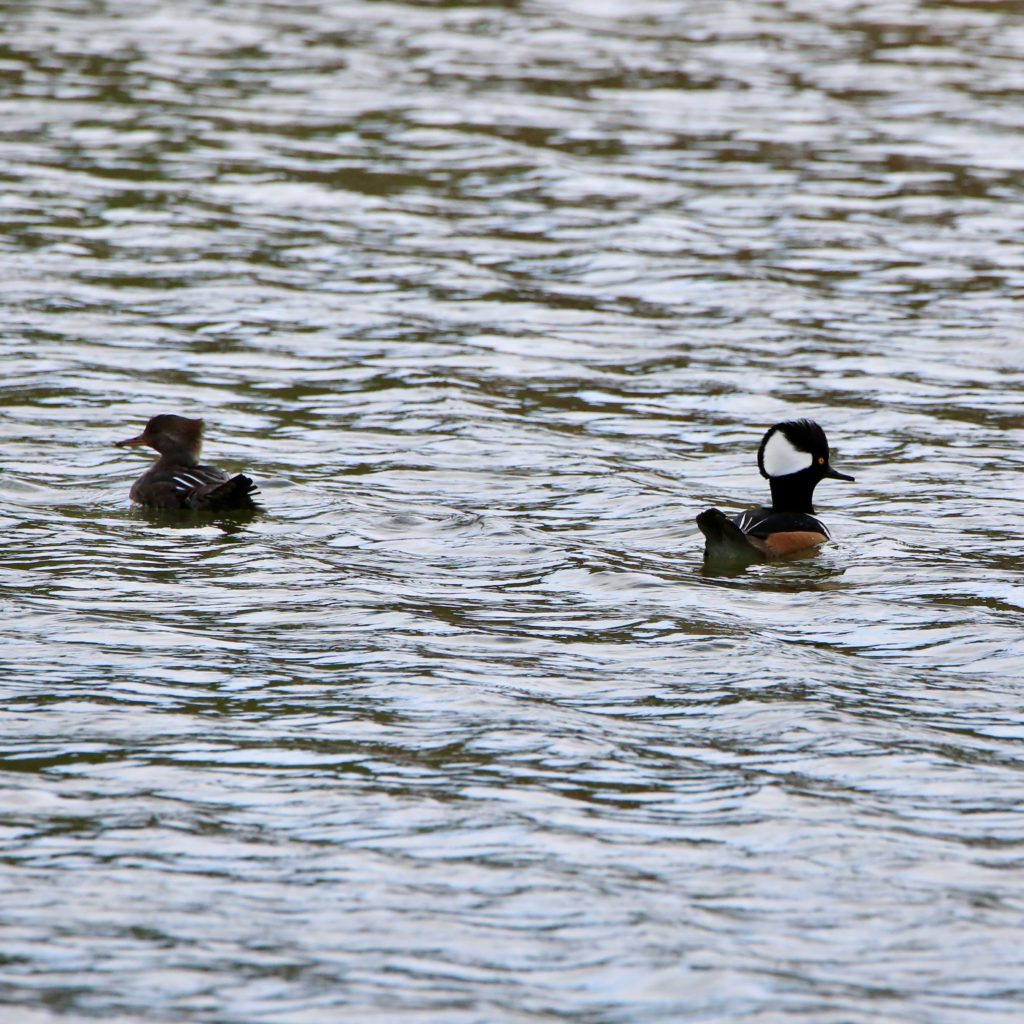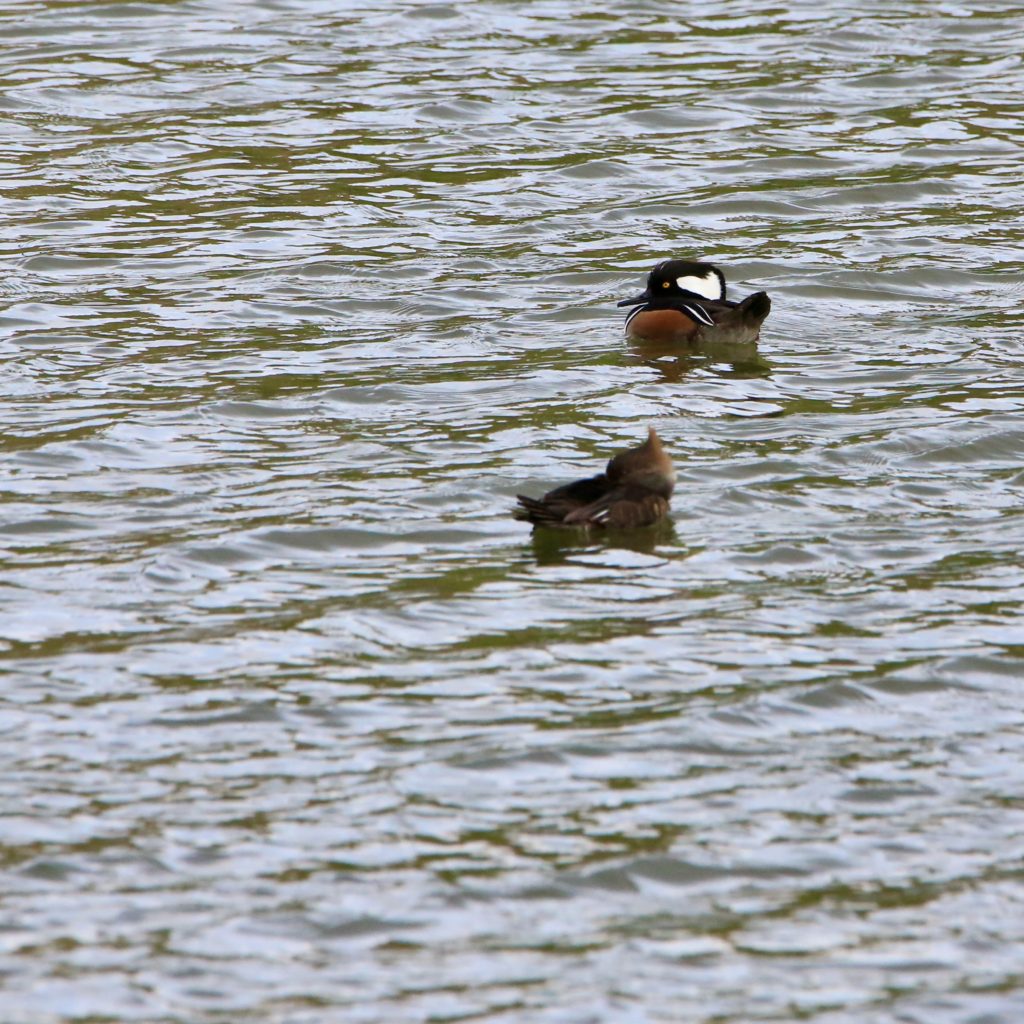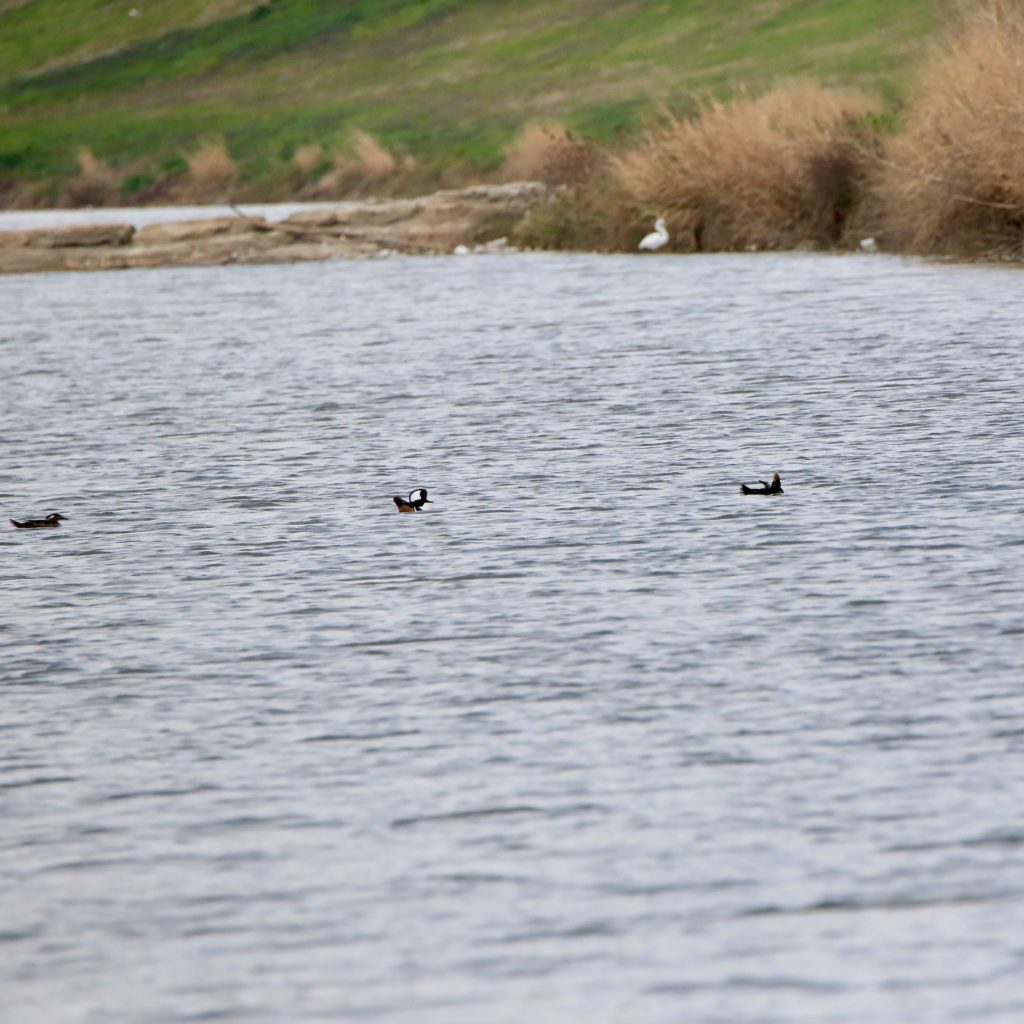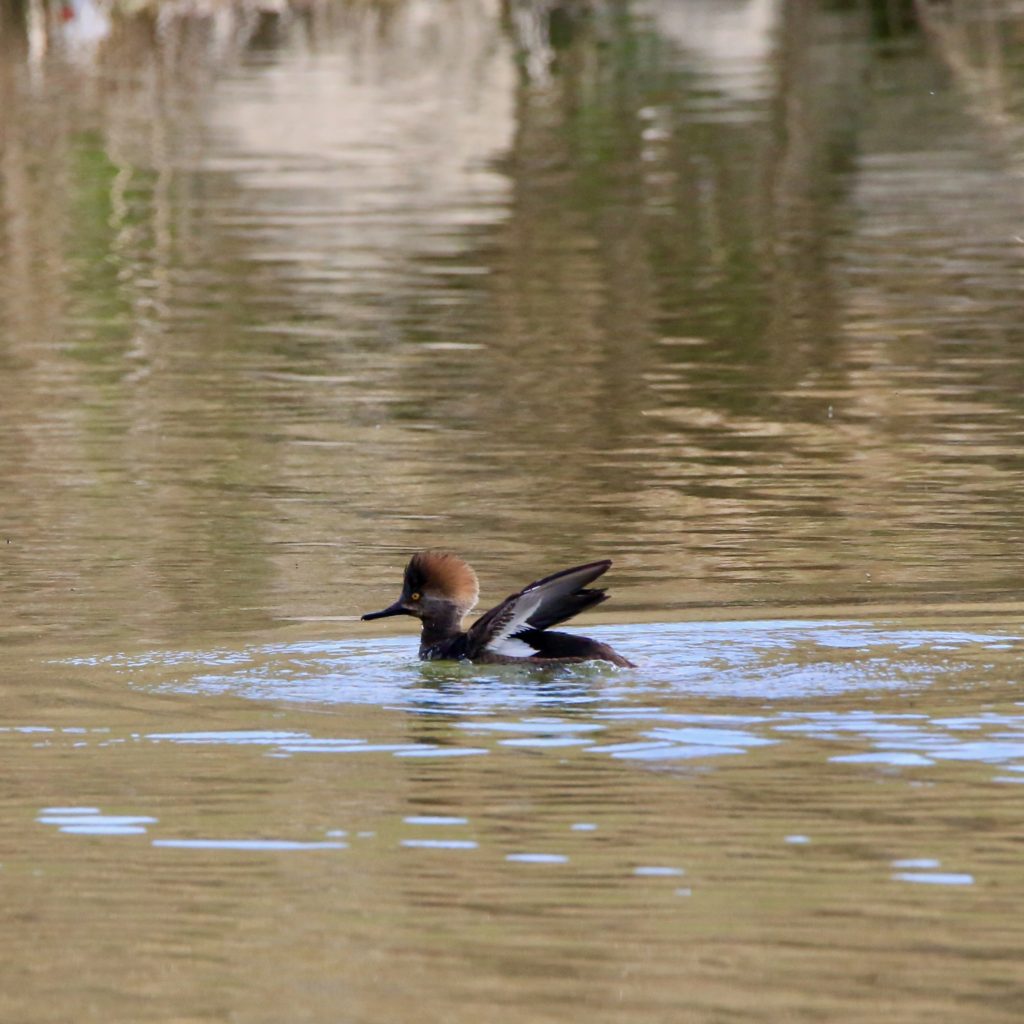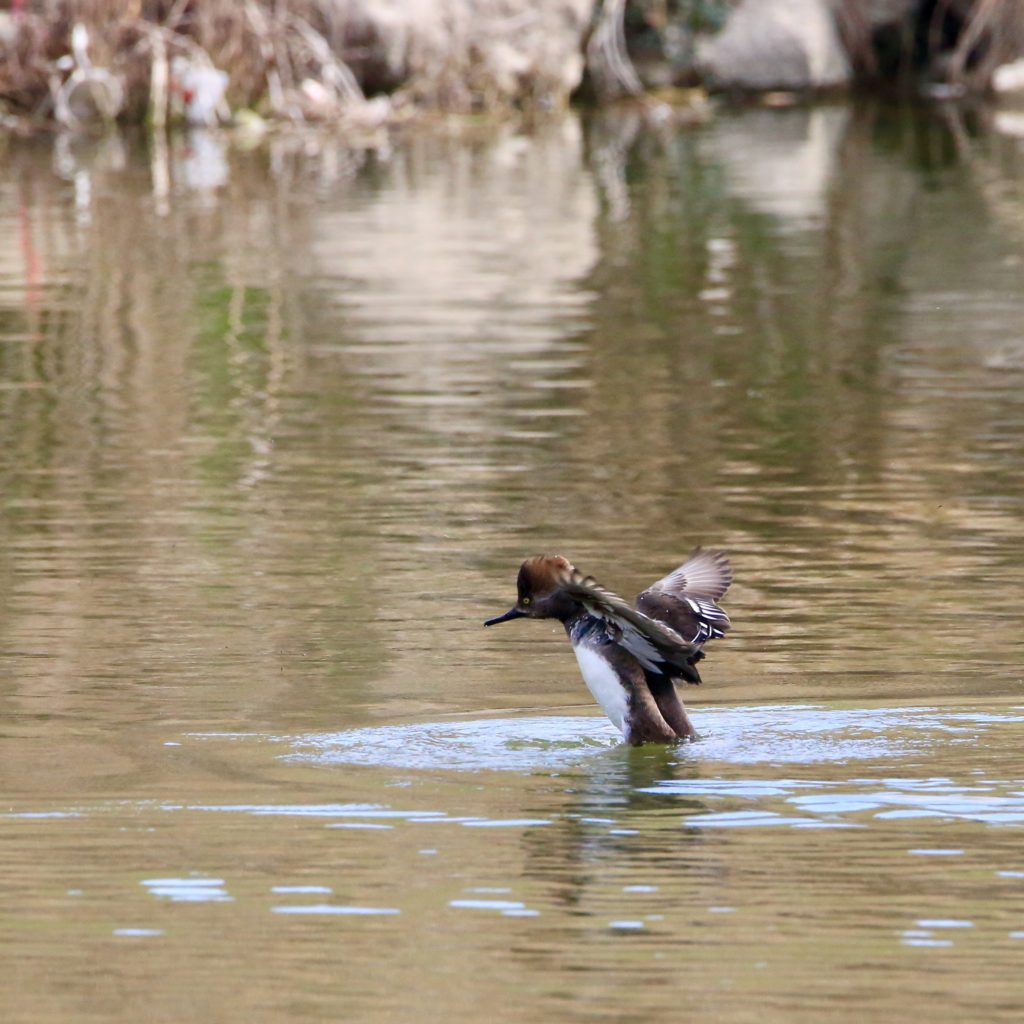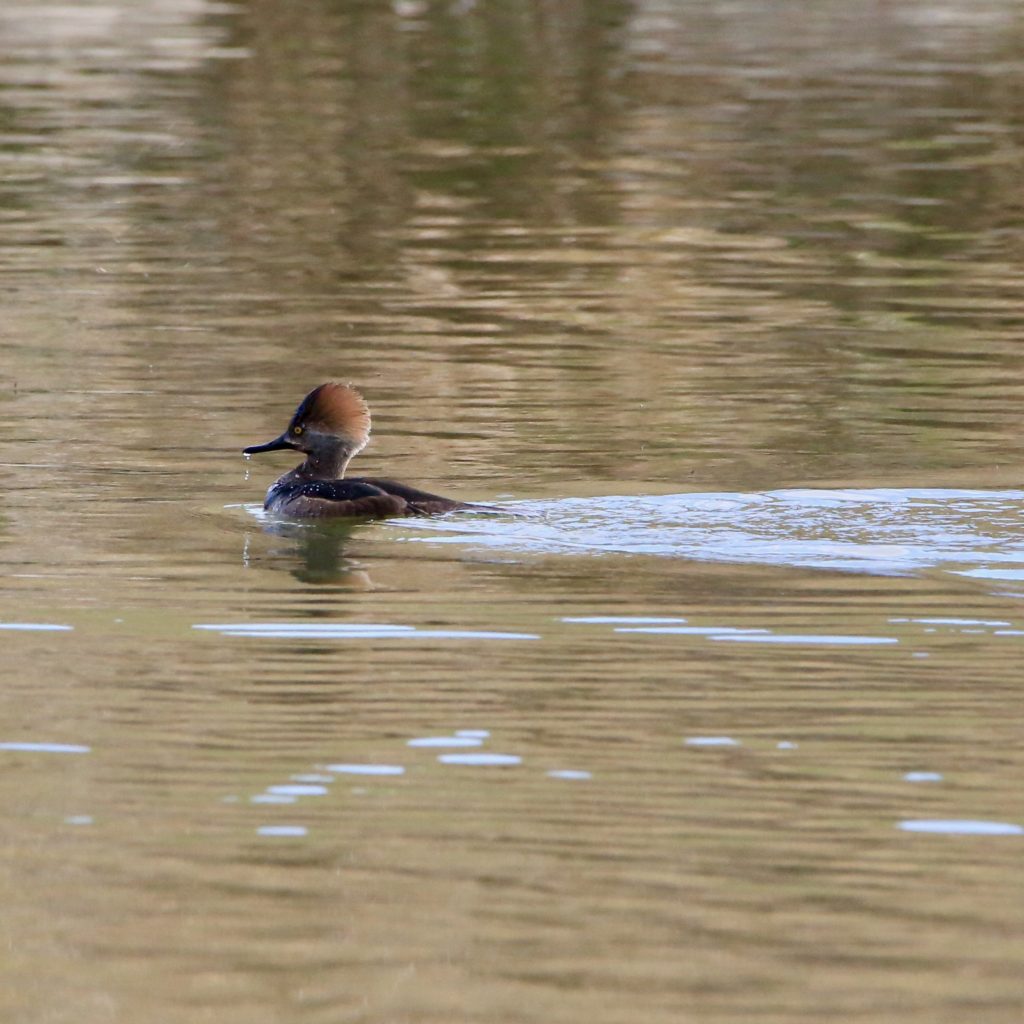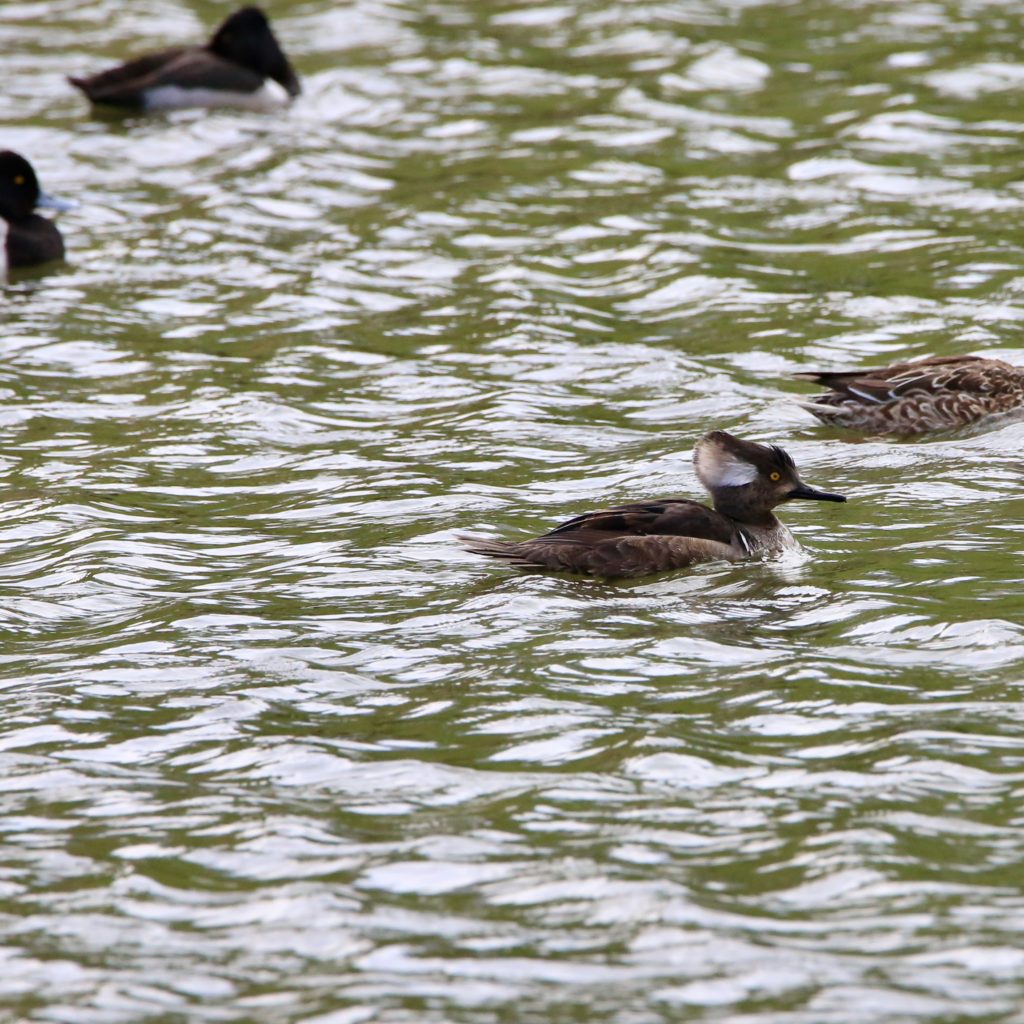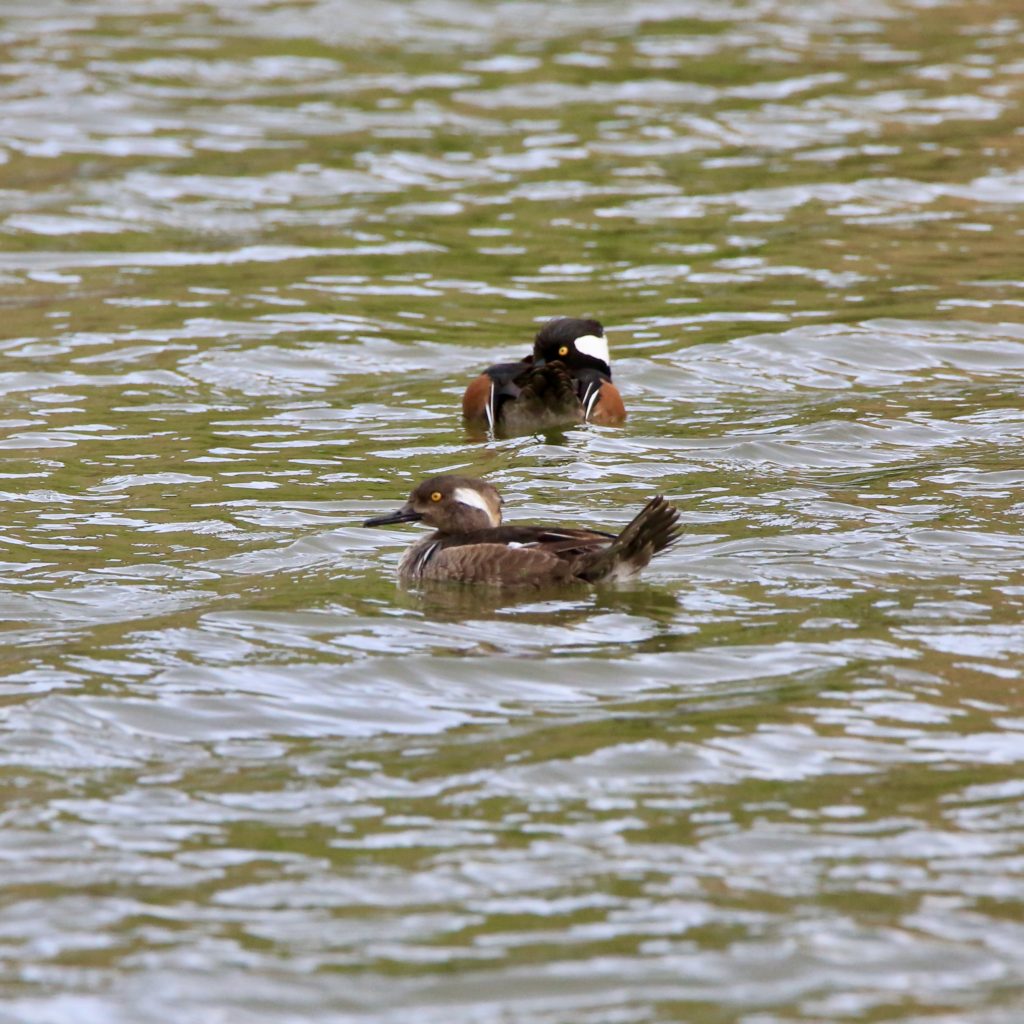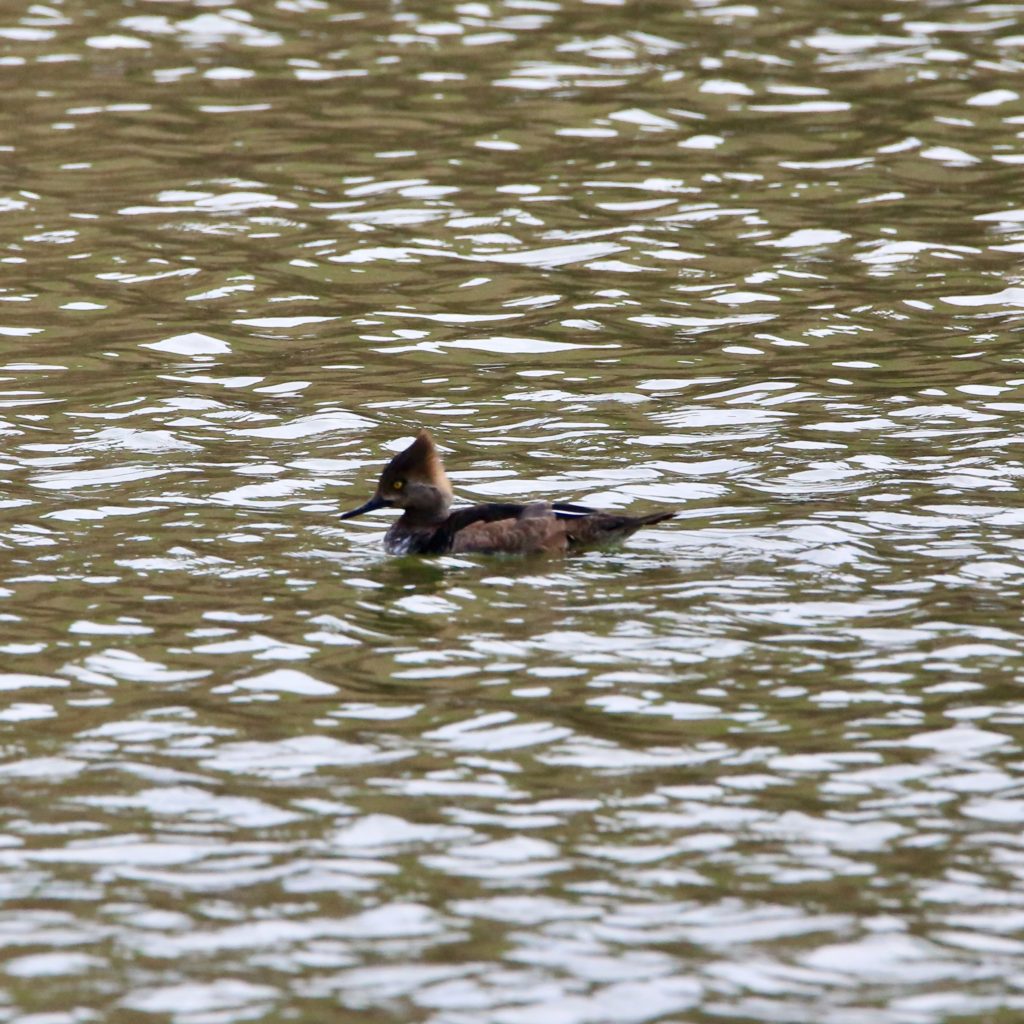
Hooded Merganser
A Hooded Merganser is a fun bird to see while bird watching. Below are some tips to help you identify Hooded Mergansers. We have also put together a list of fun Hooded Merganser t-shirts, Hooded Merganser bird patches, birdhouses, bird feeders, binoculars, stickers, and other fun bird watching items.
About Hooded Mergansers
Hooded Mergansers (Lophodytes Cucullatus) are small diving birds popular for their white fan-shaped crests on their head. It is the smallest out of the three native Merganser species often found in wooded ponds in North America.
Description and Identification
Hooded Mergansers are small ducks about 15.8 – 19.3 inches long with a thin bill and a collapsible, fan-shaped crest that makes their head look oversized and oblong. Their wings are thin and can span between 23.6 – 26 inches in length. They have long tails which look rounded when they are in flight. Adult males have black upperparts with a white breast and deep chestnut flanks. Their blackheads have a large, conspicuous white patch that varies in size when the crest is raised or lowered. Females and immatures are both gray and brown, with warm and tawny-cinnamon tones on the head.
Hooded Merganser Color Pattern
The adult male Hooded Merganser has a beautiful and smooth black plumage with a white underbelly. Their body is covered in rich chestnut flanks. Its head is mostly black with a white crest that varies in size. On the other hand, females and young ones have gray-brown feathers with warm cinnamon towns on their heads.
Hooded Merganser Size
Hooded Mergansers are very small ducks distinguished by their fan-shaped crest that makes their head appear ridiculously large and oblong.
The relative size for both sexes is:
- Length: 15.8-19.3 in (40-49 cm)
- Weight: 16.0-31.0 oz (453-879 g)
- Wingspan: 23.6-26.0 in (60-66 cm)
Hooded Merganser Behavior
- The female Hooded Merganser courts its female counterpart by making low groaning calla and expanding their white crests.
- Hooded Mergansers have distinctive shallow and rapid wing beats.
Hooded Merganser Food
Their primary diet revolves around small fish, aquatic insects, crustaceans, amphibians,
mollusks, and other aquatic vegetation. Compared to other mergansers, their diet is broader
as they incorporate food sources apart from fish into their diet. This makes them versatile
predators that have a broad range of prey. They usually locate their prey by sight and dive
into shallow waters to trail them as they used their feet to propel themselves forward. These
ducks also forage by staying afloat while finding food just at the surface of the water.
Ducklings have been observed to dive for food right after leaving the nest, despite their short
beaks.
These birds are daytime feeders whose diet mostly consists of crustaceans and fish. They forage on pond bottoms, lakes, and rivers. On occasion, it also eats some aquatic insects and plants.
Hooded Merganser Habitat
These birds predominantly breed in forested wetlands throughout the eastern half of North
America and the Pacific Northwest but may also nest in treeless wetlands where human
beings provide nest boxes. They are most commonly found in the forests around the Great
Lakes, but their habitats can range from spruce-fir to pine-hardwood forests and cottonwood-
elder riparian forests in the west, to oak-cypress-tupelo forests in the east. Flocks with young
ones generally nest in areas with shallow water, such as marshes, small lakes, ponds,
beaver wetlands, swamps, and forested rivers. They generally winter along these regions as
well, choosing to move towards shallow freshwater and brackish bays, estuaries, and tidal
creeks as well.
Hooded Mergansers inhabit wooded ponds, rivers, and lakes during the breeding season. During the winter season, they take shelter at inlets and coastal marshes.
Range and Migration
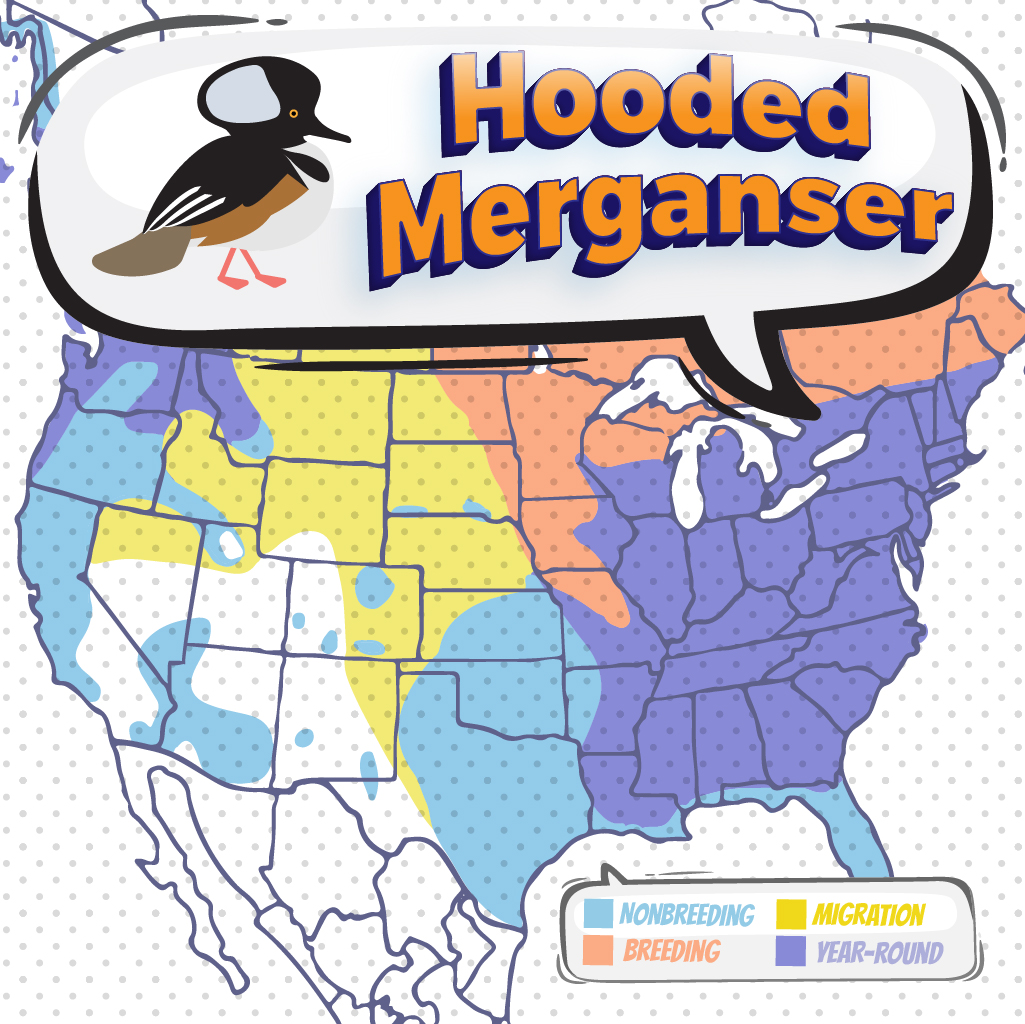
Hooded Mergansers are fish-eating ducks that are found in the United States and southern
Canada. They are short-distance migrants that winter in regions that allow for ice-free
conditions on water bodies like ponds, lakes, and rivers. Many flocks also remain around
their breeding grounds by the Pacific and Atlantic coasts all year long. In eastern North
America, many move south and southwest during the winter while some migrate north
towards the Great Lakes. The birds that breed in the upper Midwest migrate along the
Mississippi River.
Hooded Merganser Life Cycle
Hooded Merganser’s breeding season begins in March and ends in May. During this period, the male bird courts its female counterpart in small flocks.
The female lays 10 to 12 white eggs in tree hole nests that are incubated for 26 to 41 days. The male Hooded Merganser leaves the female bird in the nest for the incubation period. After about a month, the eggs begin to hatch and a day after hatching the ducklings are led to the water. The young ones take flight after 70 days.
Hooded Merganser Nesting
Nesting sites are chosen by females, often scouted by them at the end of the previous year’s
breeding season. They are usually located in tree cavities in dead or live trees, at an
approximate height of 10 – 50 feet above the ground. Females then make a shallow bowl
within the material that is already present in the cavity before she starts laying eggs. They
also nest in manmade nest boxes enthusiastically, showing clear preferences for boxes that
include nest material from previous uses. They have one brood every breeding season and
can lay up to 5 – 13 eggs in a single clutch.
Ornithology
Bird Watching Academy & Camp Subscription Boxes
At Bird Watching Academy & Camp we help kids, youth, and adults get excited and involved in bird watching. We have several monthly subscription boxes that you can subscribe to. Our monthly subscription boxes help kids, youth, and adults learn about birds, bird watching, and bird conservation.
Bird Watching Binoculars for Identifying Hooded Mergansers
The most common types of bird-watching binoculars for viewing Hooded Mergansers are 8×21 binoculars and 10×42 binoculars. Bird Watching Academy & Camp sells really nice 8×21 binoculars and 10×42 binoculars. You can view and purchase them here.
Hooded Merganser T-shirts
If you love the Hooded Merganser you should purchase a Bird Watching Academy & Camp T-shirt. To help support bird conservation we donate 10 percent to bird conservation activities.
Hooded Merganser Iron On Patches
Kids, Youth, and Adults love to collect our Bird Watching Academy & Camp iron-on patches. Our bird-watching patches help you keep track of the birds you have seen and identified. You can also display the patches on our Bird Watching Academy & Camp banners.
The Hooded Merganser is a great iron-on patch to start your collection with. The patches are durable and can be sewn on or ironed on to just about anything.
Hooded Merganser Stickers
Stickers are a great way for you to display your love for bird watching and the Hooded Merganser. We sell a monthly subscription sticker pack. The sticker packs have 12 bird stickers. These sticker packs will help your kids learn new birds every month.
Bird Feeders for Hooded Mergansers
There are many types of bird feeders. Here are our favorite bird feeders for your backyard. We use all of these bird feeders currently. Kids will have a great time watching birds eat at these bird feeders. Using this collection of bird feeders will provide a wide variety and many types of birds.
Best Bird Houses for Hooded Mergansers
There are many types of birdhouses. Building a birdhouse is always fun but can be frustrating. These 4 birdhouses have become our favorites. Getting a birdhouse for kids to watch birds grow is always fun. We spent a little extra money on these birdhouses but they have been worth the higher price and look great.


